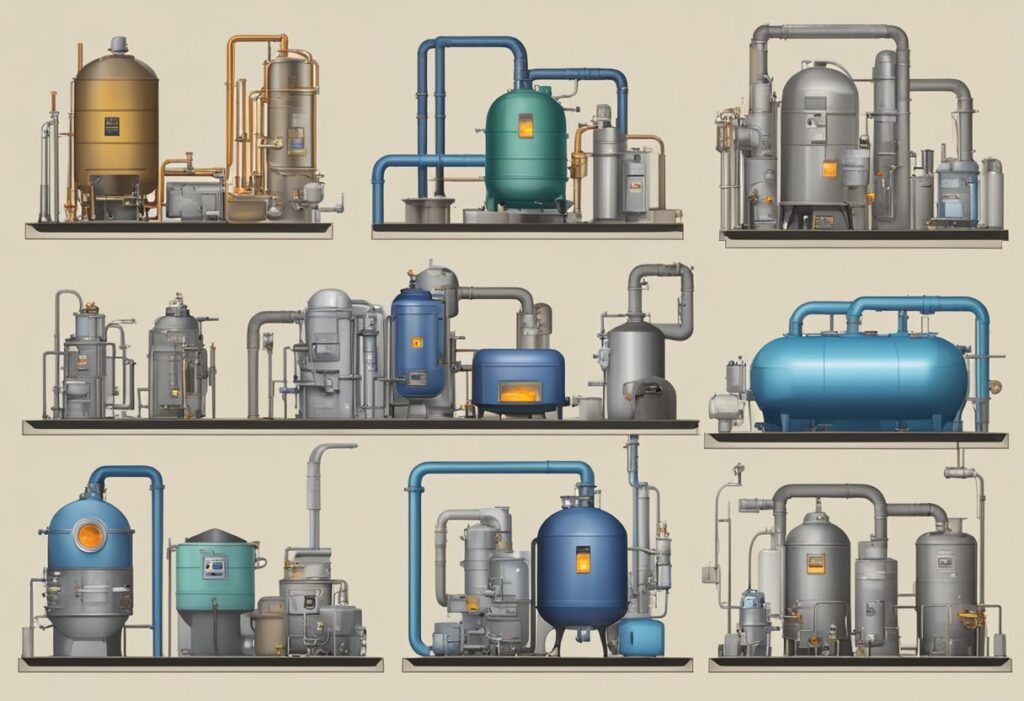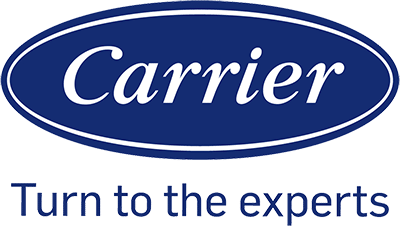In this article, we explore the different types of furnaces available, with a focus on their energy sources and common uses. Each furnace type has unique attributes and applications.

Gas Furnaces
Gas furnaces are one of the most common types found in homes. They typically operate using natural gas and are valued for their efficiency and cost-effectiveness.
- Energy Source: Natural Gas
- Efficiency: High
- Common Use: Residential heating
Electric Furnaces
Electric furnaces convert electrical energy into heat and are known for their simplicity and safety. They can be more expensive to operate than gas furnaces, due to the cost of electricity.
- Energy Source: Electricity
- Efficiency: Moderate to High
- Common Use: Areas where natural gas is unavailable
Oil Furnaces
Typically used in areas where natural gas and propane are less accessible, oil furnaces utilize oil as a fuel source. They require regular supply and maintenance.
- Energy Source: Oil
- Efficiency: Moderate
- Common Use: Rural areas
Propane Furnaces
For regions where natural gas is not an option, propane furnaces offer a viable alternative. Propane is stored in tanks and offers comparable efficiency to natural gas furnaces.
- Energy Source: Propane
- Efficiency: High
- Common Use: Remote locations without natural gas
Wood and Alternative Fuel Furnaces
Wood furnaces burn wood for heat and can be cost-effective where wood is abundant. Some designs accommodate alternative fuels such as pellets or corn.
- Energy Source: Wood, Biomass Pellets, etc.
- Efficiency: Varies by model and fuel type
- Common Use: Eco-conscious homes, areas with abundant wood
Our journey through furnace types demonstrates the diversity of options available, each with its own considerations in terms of energy source, efficiency, and optimal setting.
Furnace Efficiency and Maintenance
Maintaining our furnace’s efficiency is key to ensuring longevity and reducing energy bills. The efficiency of a furnace is measured by the Annual Fuel Utilization Efficiency (AFUE) rating, which indicates the percentage of fuel converted to heat. A higher AFUE rating signifies a more efficient furnace.
Regular Maintenance
- Clean/Replace Filters: We should check our furnace filters monthly and replace or clean them as needed to maintain air quality and efficiency.
- Inspect Blowers: Keeping the blower motor and its components clean is essential for proper airflow and furnace operation.
- Check Air Filtration: Ensuring that air filtration systems are working correctly can improve indoor air quality and furnace efficiency.
AFUE Rating
Understanding the AFUE rating helps us choose a furnace that saves energy in the long term. High-efficiency furnaces have an AFUE of 90% or more, meaning they convert most of the energy into heat with minimal waste.
Warranty and Repairs
- Regular maintenance can keep our furnace running smoothly and may be a requirement to keep our warranty valid.
- Proactive furnace repair can prevent minor issues from becoming major problems, saving us from unexpected downtime and expenses.
Energy Consumption
- High-Efficiency Systems: Investing in high-efficiency furnaces can significantly reduce our energy bills.
- Adjust Settings: We can fine-tune thermostats and humidifiers for precision control over our heating and energy usage.
By adhering to these maintenance tips, we can ensure our furnace operates at peak efficiency, leading to a longer lifespan and consistent savings on our energy bills.
Choosing the Right Furnace for Your Home
When selecting a furnace, it’s essential to consider size, local climate, budget, and your home’s energy efficiency to ensure optimal performance and cost-effectiveness.
Size and Power Considerations
The furnace’s size and power, measured in British Thermal Units (BTUs), are crucial to match with the specific needs of our home. A unit too small won’t keep up with the cold, while one too large will cycle too frequently, wasting energy.
- Correct Sizing: To determine the right size, we calculate the home’s heating needs based on square footage, layout, and thermal characteristics. Professional HVAC contractors can perform a Manual J calculation to establish the exact BTUs required.
- Power Range: Residential HVAC units typically range from 40,000 to 120,000 BTUs. It’s essential to select one within this range that matches our specific heating requirements.
Climate and Regional Factors
Our region’s climate dictates the type and power of the furnace we need. Homes in colder climates require a higher BTU rating to maintain comfort.
- Cold Climates: In regions with harsh winters, a high-efficiency, high-BTU furnace is necessary to combat the low temperatures.
- Mild Climates: For milder climates, a moderate BTU rating and standard efficiency may suffice, ensuring we’re not overspending on unnecessary power.
Budget and Cost Considerations
The initial purchase price and the long-term operating costs must be balanced to choose the most cost-effective furnace.
- High-Efficiency Models: While more expensive upfront, they can significantly reduce our monthly bills in the long run.
- Standard Furnaces: They are more affordable initially but may result in higher energy costs over time.
Home Insulation and Efficiency
Our home’s insulation and efficiency, including windows, doors, and the condition of the basement and exterior walls, affect the furnace’s performance.
- Insulation Quality: The better our home is insulated, the lower BTU furnace we can consider, as less heat will escape.
- Energy Efficiency: Upgraded windows and doors can reduce the need for a high-powered furnace, helping us save on heating costs and environmental impact.
By carefully evaluating these factors, we can select a residential HVAC system that ensures comfort and efficiency without overspending.
Advanced Furnace Technologies
When exploring furnace technologies, it’s crucial to understand the differences in operation stages and how recent advancements can lead to energy savings. This section examines the nuances of these technologies.

Single-Stage vs. Two-Stage vs. Modulating
Single-stage furnaces operate at one, fixed level of heat output—full capacity—resulting in a constant and often excessive energy use. Our two-stage furnace counterparts offer a more efficient operation by adjusting to either low or high settings based on the demand, which can lead to reduced energy bills.
Modulating furnaces, such as the Trane XC95M, take this concept further by offering a spectrum of heating stages. These units fine-tune the heat output in tiny increments, ensuring unparalleled comfort and energy efficiency.
Technological Advancements
A key innovation in advanced furnace technologies is the introduction of Variable Speed Blowers. These blowers adjust air delivery speed to match the specific heating requirements, leading to quieter operation and improved energy bills management.
Another leap forward is the use of ECM (Electronically Commutated Motors), which are more reliable and consume less electricity compared to traditional motors, adding to the furnace’s overall efficiency.
Energy-Saving Features
Our advanced furnaces incorporate various energy-saving features. One such feature is the modulating gas valve, which works in tandem with the modulating function, regulating gas flow to the burner with precision and resulting in significant energy conservation.
High efficiency is also achieved through better heat exchanger designs and smarter thermostat controls, which work together to minimize waste and optimize fuel utilization. By investing in an advanced furnace, we ensure that our energy expenditure is aligned with our actual heating needs.
Installation, Safety, and Brand Selection
We understand the importance of proper installation, adherence to safety protocols, and careful brand selection when it comes to home heating solutions. Let’s discuss the ideal procedures and considerations for a safe and efficient setup.
Professional Installation
A proper furnace installation is crucial for both performance and safety. When installing a forced-air system, we must ensure that air distribution is optimized to facilitate even home heating and maintain indoor air quality. A licensed professional will accurately size the unit and confirm that ductwork is clean and unobstructed.
Checklist for Furnace Installation
- Obtain all necessary permits
- Conduct a thorough size assessment
- Install to manufacturer specifications
- Secure all connections for gas, electric, and ductwork
Safety Protocols and Best Practices
Safety is paramount when operating any heating system. A correct installation following the manufacturer’s guidelines is the first step. Subsequently, regular maintenance, including inspection of burners, ignition systems, and safety controls, is critical. It’s also essential to ensure that carbon monoxide detectors are functioning correctly.
Important Safety Measures
- Install carbon monoxide detectors
- Conduct annual maintenance checks
- Replace filters as recommended
Choosing the Right Brand
When selecting a furnace brand, considering the advantages and potential disadvantages is key. Trane, Carrier, American Standard, Rheem, and Goodman are reputable brands that offer reliable home heating solutions. Each brand offers unique features that cater to different needs, from boilers to high-efficiency forced-air systems.
Warranty
- Trane: Up to 10-year limited warranty on parts
- Carrier: Comprehensive warranties, including a 10-year parts limited warranty
- American Standard: Offers varying terms, including a 20-year heat exchanger warranty
- Rheem: Protection ranging from parts to lifetime unit replacement
- Goodman: Long-term warranties, including a possible lifetime compressor warranty
When we choose a brand, we closely examine each brand’s offered warranties, reliability, and customer support services to ensure the best fit for our specific heating needs.
Frequently Asked Questions
In this section, we address common inquiries about furnaces, offering insights to assist homeowners in making informed decisions regarding their heating systems.
How do I know what kind of furnace I need for my home?
To determine the best furnace for your home, consider the size of your space, climate, and energy efficiency goals. It’s important to choose a furnace with the proper heating capacity measured in BTUs (British Thermal Units) for your space.
What type of furnace is most energy efficient?
Electric furnaces tend to be more energy efficient in terms of converting energy into heat. However, due to the cost of electricity, natural gas furnaces are generally more cost-effective to operate, despite having a lower energy efficiency rating compared to electric models.
In what ways do different furnace types vary in their operation and effectiveness?
Furnace types vary largely in their fuel source, efficiency, and how they manage airflow. Electric, gas, and oil furnaces have different operational costs and maintenance requirements. Their effectiveness also depends on the specifics of the environment they’re used in.
What are the primary considerations when choosing a furnace for residential use?
When choosing a residential furnace, consider the type of fuel available, the energy efficiency rating, the size of the furnace relative to your home, upfront cost, and long-term operating costs. Maintenance and installation requirements are also critical factors.
Can you explain the differences between single-stage, two-stage, and modulating furnaces?
Single-stage furnaces operate at full throttle whenever they are on, leading to possible fluctuations in temperature. Two-stage furnaces can run at a low setting most of the time, ramping up to full capacity as needed, which improves efficiency. Modulating furnaces can fine-tune their output in small increments for precise temperature control and optimal energy efficiency.
How do forced air furnaces differ from other types of heating systems?
Forced air furnaces heat air and distribute it throughout the home using ductwork and vents. This differs from systems like radiant heating, which involves heating surfaces to warm a space, or boilers, which circulate hot water through pipes and radiators. Forced air systems are unique in their ability to filter and humidify the air and are commonly used in central heating and cooling systems.




